(Mise à jour pour être en accord avec la nouvelle version de la source de la page) |
(Mise à jour pour être en accord avec la nouvelle version de la source de la page) |
||
| Ligne 1 : | Ligne 1 : | ||
{{ {{tntn|Tuto Details}} | {{ {{tntn|Tuto Details}} | ||
| − | | | + | |Main_Picture=Photo ZEER POT.jpg |
| − | | | + | |Licences=Attribution-ShareAlike (CC BY-SA) |
| − | | | + | |Description=Make a refrigerator that works without electricity! |
| + | |Area=Food | ||
|Type=Tutorial | |Type=Tutorial | ||
| − | |||
| − | |||
| − | |||
|Difficulty=Very easy | |Difficulty=Very easy | ||
| + | |Duration=2 | ||
| + | |Duration-type=hour(s) | ||
|Cost=10 | |Cost=10 | ||
|Currency=EUR (€) | |Currency=EUR (€) | ||
| − | | | + | |Tags=Frigo, Désert, zeerpot, NomadeDesMers, conservation, Alimentation |
| − | |||
| − | |||
| − | |||
|SourceLanguage=fr | |SourceLanguage=fr | ||
|Language=en | |Language=en | ||
| Ligne 55 : | Ligne 52 : | ||
|Tools=No tools are needed to make a Zeer Pot | |Tools=No tools are needed to make a Zeer Pot | ||
}} | }} | ||
| − | |||
{{ {{tntn|Tuto Step}} | {{ {{tntn|Tuto Step}} | ||
| − | |||
|Step_Title=How it works | |Step_Title=How it works | ||
|Step_Content=The Zeer Pot is: | |Step_Content=The Zeer Pot is: | ||
| Ligne 68 : | Ligne 63 : | ||
In this case, the heat contained in the internal pot will supply this energy and allow the water to evaporate. | In this case, the heat contained in the internal pot will supply this energy and allow the water to evaporate. | ||
This thermal reaction lowers the internal pot temperature and keeps the food cool. | This thermal reaction lowers the internal pot temperature and keeps the food cool. | ||
| + | |Step_Picture_00=Fonctionnement.jpg | ||
}} | }} | ||
{{ {{tntn|Tuto Step}} | {{ {{tntn|Tuto Step}} | ||
| − | |||
|Step_Title=External pot | |Step_Title=External pot | ||
|Step_Content=In the bottom of the outer pot place a layer of sand thick enough so that the top of the inner pot is at the same height as the top. | |Step_Content=In the bottom of the outer pot place a layer of sand thick enough so that the top of the inner pot is at the same height as the top. | ||
the top of the outer pot. Then moisten. | the top of the outer pot. Then moisten. | ||
| + | |Step_Picture_00=Pot externe.jpg | ||
}} | }} | ||
{{ {{tntn|Tuto Step}} | {{ {{tntn|Tuto Step}} | ||
| − | |||
|Step_Title=Internal pot | |Step_Title=Internal pot | ||
|Step_Content=Place the inner pot inside the outer pot. | |Step_Content=Place the inner pot inside the outer pot. | ||
| Ligne 82 : | Ligne 77 : | ||
Attention: the pot must be well stabilized on the first layer of sand | Attention: the pot must be well stabilized on the first layer of sand | ||
and placed in the center of the outer pot. | and placed in the center of the outer pot. | ||
| + | |Step_Picture_00=Pot interne.jpg | ||
}} | }} | ||
{{ {{tntn|Tuto Step}} | {{ {{tntn|Tuto Step}} | ||
| − | |||
|Step_Title=Sand | |Step_Title=Sand | ||
|Step_Content=Fill the gap between the two pots with several successive layers of sand... | |Step_Content=Fill the gap between the two pots with several successive layers of sand... | ||
| + | |Step_Picture_00=Sable2.jpg | ||
}} | }} | ||
{{ {{tntn|Tuto Step}} | {{ {{tntn|Tuto Step}} | ||
| − | |||
|Step_Title=Water | |Step_Title=Water | ||
|Step_Content=... without forgetting to moisten the sand at each layer. | |Step_Content=... without forgetting to moisten the sand at each layer. | ||
| + | |Step_Picture_00=Eau2.jpg | ||
}} | }} | ||
{{ {{tntn|Tuto Step}} | {{ {{tntn|Tuto Step}} | ||
| − | |||
|Step_Title=Use | |Step_Title=Use | ||
|Step_Content=* Place the system in a dry area, out of direct sunlight and in a draught. | |Step_Content=* Place the system in a dry area, out of direct sunlight and in a draught. | ||
| Ligne 104 : | Ligne 99 : | ||
*Re-wet the sand as soon as it starts to dry, about twice a day. | *Re-wet the sand as soon as it starts to dry, about twice a day. | ||
| + | |Step_Picture_00=Utilisation2.jpg | ||
}} | }} | ||
{{ {{tntn|Tuto Step}} | {{ {{tntn|Tuto Step}} | ||
| − | |||
|Step_Title=Making the most of the Zeer Pot | |Step_Title=Making the most of the Zeer Pot | ||
|Step_Content=What to put in a Zeer Pot? | |Step_Content=What to put in a Zeer Pot? | ||
| Ligne 123 : | Ligne 118 : | ||
For more information on this subject, the linked document contains a summary table of daily food preservation: | For more information on this subject, the linked document contains a summary table of daily food preservation: | ||
http://horizonalimentaire.fr/sites/horizonalimentaire.fr/files/fichiers/guide_conservation_fetl_comite_conso_aprifel.pdf | http://horizonalimentaire.fr/sites/horizonalimentaire.fr/files/fichiers/guide_conservation_fetl_comite_conso_aprifel.pdf | ||
| + | |Step_Picture_00=Se servir au mieux du Zeer Pot.jpg | ||
}} | }} | ||
{{ {{tntn|Notes}} | {{ {{tntn|Notes}} | ||
|Notes=Watch the video tutorial [https://www.youtube.com/watch?v=7saOOyc5opE here] | |Notes=Watch the video tutorial [https://www.youtube.com/watch?v=7saOOyc5opE here] | ||
| + | <div class="mw-translate-fuzzy"> | ||
Download the tutorial[http://lowtechlab.org/wp-content/uploads/2016/08/LE-LAB-Zeer-Pot.pdf here in french] | Download the tutorial[http://lowtechlab.org/wp-content/uploads/2016/08/LE-LAB-Zeer-Pot.pdf here in french] | ||
| + | </div> | ||
Feel free to comment, share, and enhance the tutorial information useful for its improvement. | Feel free to comment, share, and enhance the tutorial information useful for its improvement. | ||
| Ligne 134 : | Ligne 132 : | ||
}} | }} | ||
{{ {{tntn|Tuto Status}} | {{ {{tntn|Tuto Status}} | ||
| − | |Complete= | + | |Complete=Published |
}} | }} | ||
| + | {{ {{tntn|Separator}}}} | ||
Version du 7 octobre 2019 à 08:39
Description
Make a refrigerator that works without electricity!
Introduction
In countries where temperatures frequently rise above 20°C, food does not stay fresh for long. A tomato, for example, is damaged in only 2 days. Also, given the price and energy consumption of a refrigerator, food preservation is a recurring problem in developing countries. Thus, without means of conservation, even if a family affected by poverty produces enough food to feed itself, it has few means to fight hunger.
A food preservation system can greatly improve the daily lives of many families. In particular, it opens up economic opportunities: to preserve food is also to be able to sell it.
Apart from any financial worries, a family can also seek to consume less energy by favouring natural means of refrigeration and thus reduce its environmental impact.
The Zeer Pot - desert fridge - can be a viable solution to the problem. It is a refrigeration device that keeps food cool, without electricity, thanks to the principle of cooling by evaporation.
This inexpensive and easy to manufacture technology can be used to cool substances such as water, food or drugs sensitive to high temperatures. It helps to avoid flies or other insects. Moreover, most foods can be stored in a Zeer Pot for 15 to 20 days longer than left in the open air and vegetables keep their vitamins better. Indeed, under good conditions (explained later in this tutorial), the temperature inside the system can reach 10°C less than the outside temperature.Youtube
Matériaux
- 1 clay pot 50 x 46 cm
- 1 terracotta (or clay) pot 30 x 40 cm
- About 45 kg of fine sand
- About 15 litres of drinking water*
- 1 breathable fabric or cover
Adaptability :
The dimensions of the two jars vary according to the quantity of food you wish to be able to preserve. Here we propose to build a Zeer Pot that can contain 12 kg of food. This will require an outer pot 50 cm in diameter and an inner pot 30 cm in diameter. The size can be adapted according to the needs provided that the proportions are respected.
Health precautions :
Attention : *Using contaminated water could contaminate the food deposited in the inner pot. The same will apply if the sand contains harmful elements such as hydrocarbons.
Outils
No tools are needed to make a Zeer Pot
Étape 1 - How it works
The Zeer Pot is: 2 terracotta (or clay) pottery interwoven with a layer of moist sand of about 4 cm between the two. The inner jar contains food to keep cool. The sand allows the refrigeration of the system. The outer pot contains it all.
The water contained in the sand needs energy to be transformed into steam, this is the principle of evaporation. In this case, the heat contained in the internal pot will supply this energy and allow the water to evaporate. This thermal reaction lowers the internal pot temperature and keeps the food cool.
Étape 2 - External pot
In the bottom of the outer pot place a layer of sand thick enough so that the top of the inner pot is at the same height as the top. the top of the outer pot. Then moisten.
Étape 3 - Internal pot
Place the inner pot inside the outer pot.
Attention: the pot must be well stabilized on the first layer of sand and placed in the center of the outer pot.
Étape 6 - Use
- Place the system in a dry area, out of direct sunlight and in a draught.
- Fill the Zeer Pot with the food.
- Moisten the breathable fabric and place it on the surface of the system
as a lid.
- Re-wet the sand as soon as it starts to dry, about twice a day.
Étape 7 - Making the most of the Zeer Pot
What to put in a Zeer Pot?
- All fresh vegetables that are likely to rot quickly
- Water, so it stays fresh
- Medicines that do not tolerate heat well
Caution: the sand must remain well moist and the system must benefit from a continuous air flow, which can pass all around the pot. It is strongly recommended to raise the pot (on a tripod for example) so that the air can circulate as well as possible.
Caution: Some vegetables release a gas (etylene) when ripening. However, other foods can rot in contact with this gas. It is therefore advisable to avoid mixing cucurbits with apples, tomatoes, peppers... For more information on this subject, the linked document contains a summary table of daily food preservation: http://horizonalimentaire.fr/sites/horizonalimentaire.fr/files/fichiers/guide_conservation_fetl_comite_conso_aprifel.pdf
Notes et références
Watch the video tutorial here
Download the tutorialhere in french
Feel free to comment, share, and enhance the tutorial information useful for its improvement.
The Low-Tech Lab team also invites you to consult its Biblilowtech.
Published
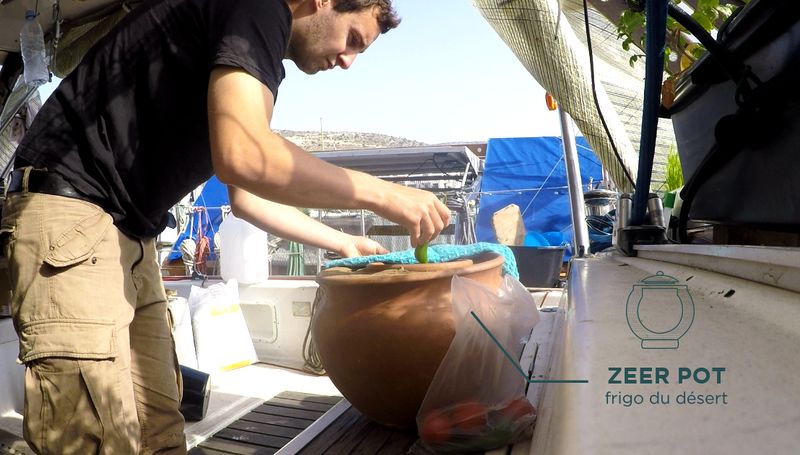
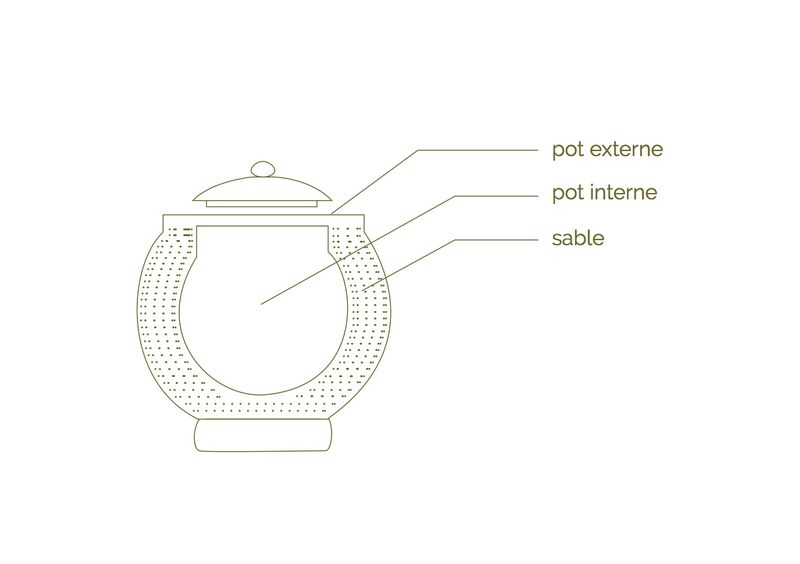
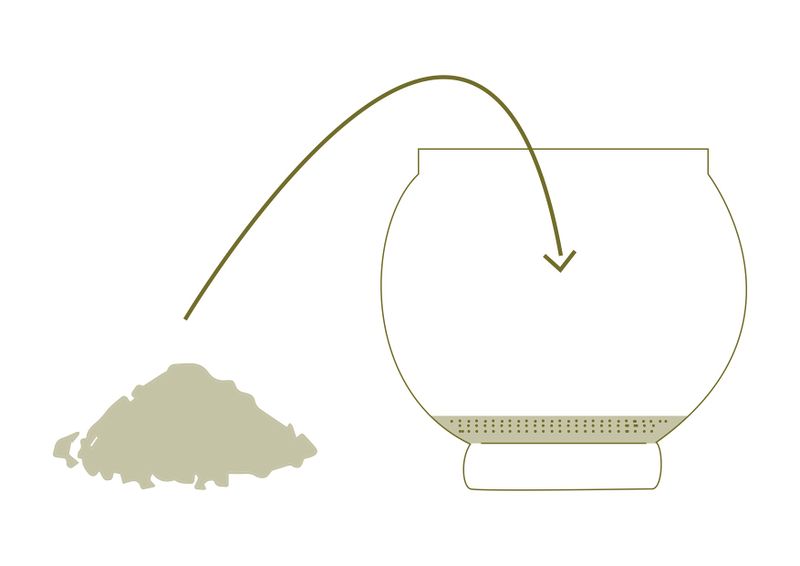
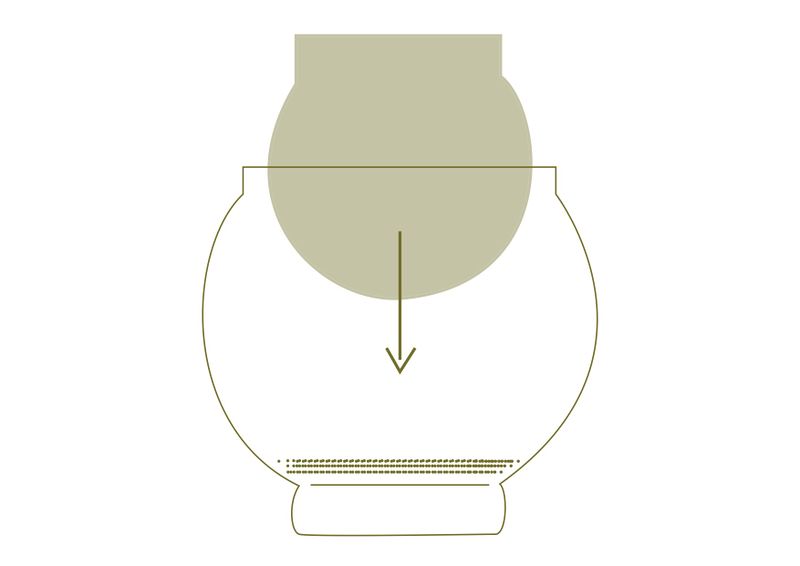
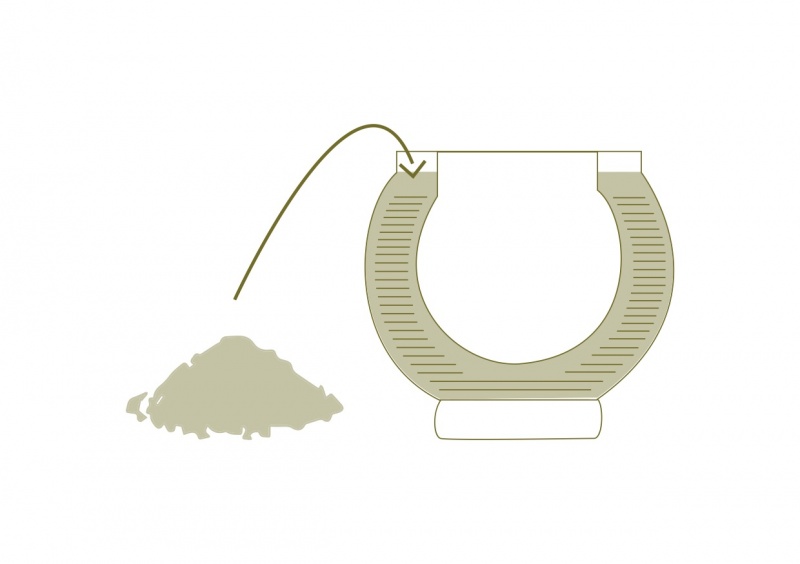
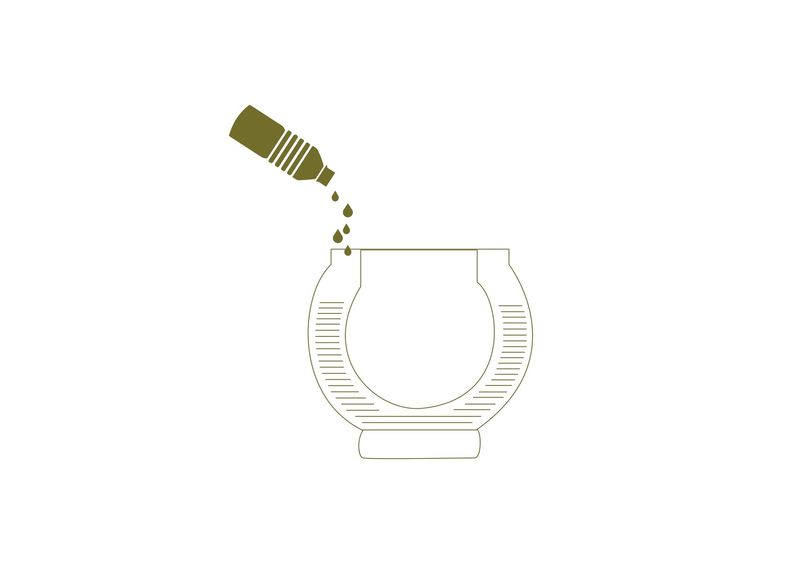
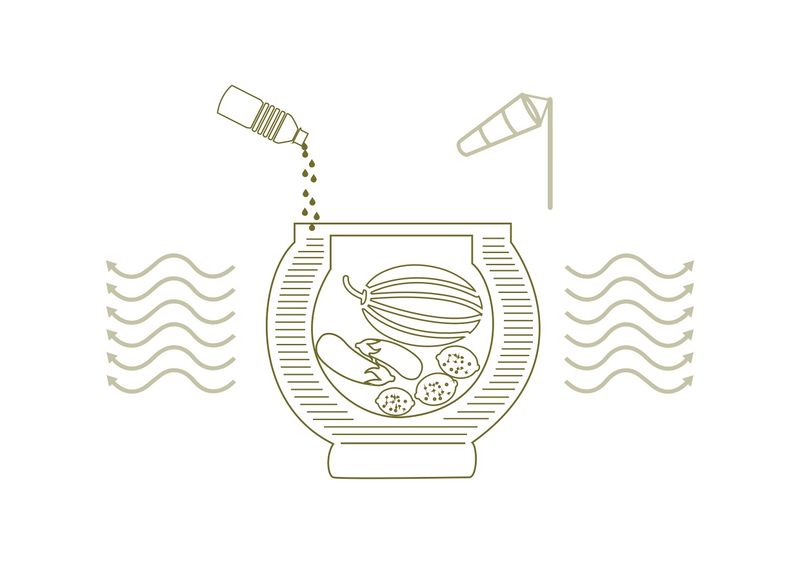

 Français
Français English
English Deutsch
Deutsch Español
Español Italiano
Italiano Português
Português